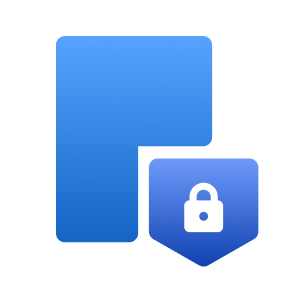Home / Technologies / Governance

Microsoft Governance consulting services
Convverge can help you get started with Governance today.

Maintain data security and policy compliance
In the IT world, governance is a strategy for ensuring that data-driven applications can be deployed securely, in alignment with an organization’s policies and external regulations, and while maintaining a high standard for data quality. While using Power Platform — a low-code suite of development tools for creating custom applications — organizations will be faced with governance challenges. Convverge can help navigate these issues with governance guidance, frameworks, standards, and training.

What Governance can do
Key Features & Benefits
Governance defines how an organization’s data-driven applications will be developed and deployed.
Enhanced Data Security
Protects your organization against data breaches and ensures compliance with regulations like GDPR and CCPA.
Improved Data Quality
Ensures consistency and accuracy in your data, which is essential for making data-driven business decisions.

Cost Management
Helps you control business operating costs, by optimizing resource usage and preventing unnecessary expenditures.
User Adoption & Consistency
Leads to clearer processes and standards, fostering higher user adoption rates and consistency across the platform.

How we can help
Governance professional services
Convverge helps businesses use Governance to keep data-related activities secure and policy compliant.
01
Governance Frameworks
Guidance on development, implementation, and best practices for proprietary governance frameworks.
02
Training & Workshops
Expert-led governance sessions and ongoing support for IT professionals and governance owners.
03
Consultation & Strategy
Advisory services that aim to align your new governance frameworks with your current business goals.
04
Standards & Consistency
Implementation of Microsoft’s Center of Excellence (CoE) toolkit for streamlined management and oversight.
Governance FAQs
What makes governance essential for modern businesses, and how does it add value?
Governance is crucial for modern businesses as it ensures that IT operations align with broader business goals, enhances efficiency, and maintains regulatory compliance. By establishing clear policies and procedures, governance provides a structured framework that guides decision-making and helps in navigating the complexities of modern IT environments.
In what ways does governance contribute to data security and compliance?
Governance plays a pivotal role in data security and compliance by setting up protocols for data management, access controls, and regular audits. These measures help protect sensitive information, prevent data breaches, and ensure adherence to legal and regulatory standards, such as GDPR and CCPA.
Can you explain the role of Microsoft’s Center of Excellence in enhancing governance?
Microsoft’s Center of Excellence (CoE) acts as a centralized control center that oversees the effective use of Microsoft technologies within an organization. It establishes best practices, aids in the development of governance policies, offers training, and ensures standardization across the board. This leads to more consistent and optimized use of Microsoft platforms.
How does governance aid in cost management and control within organizations?
Effective governance helps in cost management by preventing resource wastage, optimizing technology utilization, and avoiding unnecessary expenses. By monitoring and evaluating IT investments and usage, governance ensures that resources are used judiciously and contribute to the company’s financial health.
What impact does governance have on the development and use of Power Platform applications?
Governance significantly impacts the development and use of Power Platform applications by ensuring they are created and managed in a controlled, secure, and efficient manner. It involves setting up development guidelines, ensuring data integrity, and managing the application lifecycle, which leads to more reliable and effective applications.
What kind of training and support services does Convverge offer for governance implementation?
Convverge offers comprehensive training and support services for governance implementation. This includes developing custom governance frameworks, training IT professionals and governance owners, providing strategic advisory services, and helping implement tools like Microsoft’s Center of Excellence. Our approach ensures that your team is well-equipped to understand and adhere to governance protocols, leading to a more secure and efficient IT environment.
Are you interested in what Governance can do for your business?
Locations
Convverge serves clients worldwide from our offices in three major Canadian cities.
Calgary
Suite 920, 150 9th Avenue SW
Calgary, Alberta T2P 3H9
Vancouver
701 W Georgia St #1500
Vancouver, BC, V7V 1G5
Toronto
2967 Dundas St W #655
Toronto, ON, M6P 1Z2


